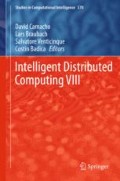Abstract
Security Information and Event Management (SIEM) systems are largely used to process logs generated by both hardware and software devices to assess the security level of service infrastructures. This log-based security analysis consists in correlating massive amounts of information in order to detect attacks and intrusions. In order to make this analysis more accurate and effective we propose an approach based on the Dempster-Shafer theory, that allows for combining evidence from multiple and heterogeneous data sources and get to a degree of belief that takes into account all the available evidence. The proposed approach has been validated with the respect to a challenging demonstration case, namely the detection of frauds performed against a Mobile Money Transfer service. An extensive simulation campaign has been executed to assess the performance of the proposed approach and the experimental results are presented in this paper.
Access this chapter
Tax calculation will be finalised at checkout
Purchases are for personal use only
Preview
Unable to display preview. Download preview PDF.
References
Abidi, M.A., Gonzalez, R.C.: Data fusion in robotics and machine intelligence. Academic Press Professional, Inc. (1992)
Coppolino, L., D’Antonio, S., Formicola, V., Romano, L.: Enhancing siem technology to protect critical infrastructures. In: Hämmerli, B.M., Kalstad Svendsen, N., Lopez, J. (eds.) CRITIS 2012. LNCS, vol. 7722, pp. 10–21. Springer, Heidelberg (2013)
Arthur, P.: Dempster. A generalization of bayesian inference. Technical report, DTIC Document (1967)
Di Sarno, C., Formicola, V., Sicuranza, M., Paragliola, G.: Addressing security issues of electronic health record systems through enhanced siem technology. In: 2013 Eighth International Conference on vailability, Reliability and Security (ARES), pp. 646–653 (September 2013)
Durrant-Whyte, H.: Multi Sensor Data Fusion. Australian Centre for Field Robotics (2001)
Ester, M., Kriegel, H.-P., Sander, J., Xu, X.: A density-based algorithm for discovering clusters in large spatial databases with noise. In: KDD, vol. 96, pp. 226–231 (1996)
Gaber, C., Hemery, B., Achemlal, M., Pasquet, M., Urien, P.: Synthetic logs generator for fraud detection in mobile transfer services. In: 2013 International Conference on Collaboration Technologies and Systems (CTS), pp. 174–179. IEEE (2013)
Gros, X.: NDT data fusion. Elsevier (1996)
Jannin, P., Grova, C., Gibaud, B.: Medical applications of NDT data fusion. Springer, Heidelberg (2001)
Panigrahi, S., Kundu, A., Sural, S., Majumdar, A.K.: Credit card fraud detection: A fusion approach using dempster–shafer theory and bayesian learning. Information Fusion 10(4), 354–363 (2009)
Rieke, R., Coppolino, L., Hutchison, A., Prieto, E., Gaber, C.: Security and Reliability Requirements for Advanced Security Event Management. In: Kotenko, I., Skormin, V. (eds.) MMM-ACNS 2012. LNCS, vol. 7531, pp. 171–180. Springer, Heidelberg (2012)
Romano, L., D’Antonio, S., Formicola, V., Coppolino, L.: Protecting the WSN zones of a critical infrastructure via enhanced SIEM technology. In: Ortmeier, F., Daniel, P. (eds.) SAFECOMP Workshops 2012. LNCS, vol. 7613, pp. 222–234. Springer, Heidelberg (2012)
Shen, S.: Market insight: The outlook on mobile payment (2010)
Smith, D., Singh, S.: Approaches to multisensor data fusion in target tracking: A survey. IEEE Transactions on Knowledge and Data Engineering 18(12), 1696–1710 (2006)
Srivastava, R.P.: The dempster-shafer theory: An introduction and fraud risk assessment illustration (2011)
Zhang, J.: Multi-source remote sensing data fusion: status and trends. International Journal of Image and Data Fusion 1(1), 5–24 (2010)
Author information
Authors and Affiliations
Corresponding author
Editor information
Editors and Affiliations
Rights and permissions
Copyright information
© 2015 Springer International Publishing Switzerland
About this paper
Cite this paper
Coppolino, L., D’Antonio, S., Formicola, V., Massei, C., Romano, L. (2015). Use of the Dempster-Shafer Theory for Fraud Detection: The Mobile Money Transfer Case Study. In: Camacho, D., Braubach, L., Venticinque, S., Badica, C. (eds) Intelligent Distributed Computing VIII. Studies in Computational Intelligence, vol 570. Springer, Cham. https://doi.org/10.1007/978-3-319-10422-5_48
Download citation
DOI: https://doi.org/10.1007/978-3-319-10422-5_48
Publisher Name: Springer, Cham
Print ISBN: 978-3-319-10421-8
Online ISBN: 978-3-319-10422-5
eBook Packages: EngineeringEngineering (R0)

